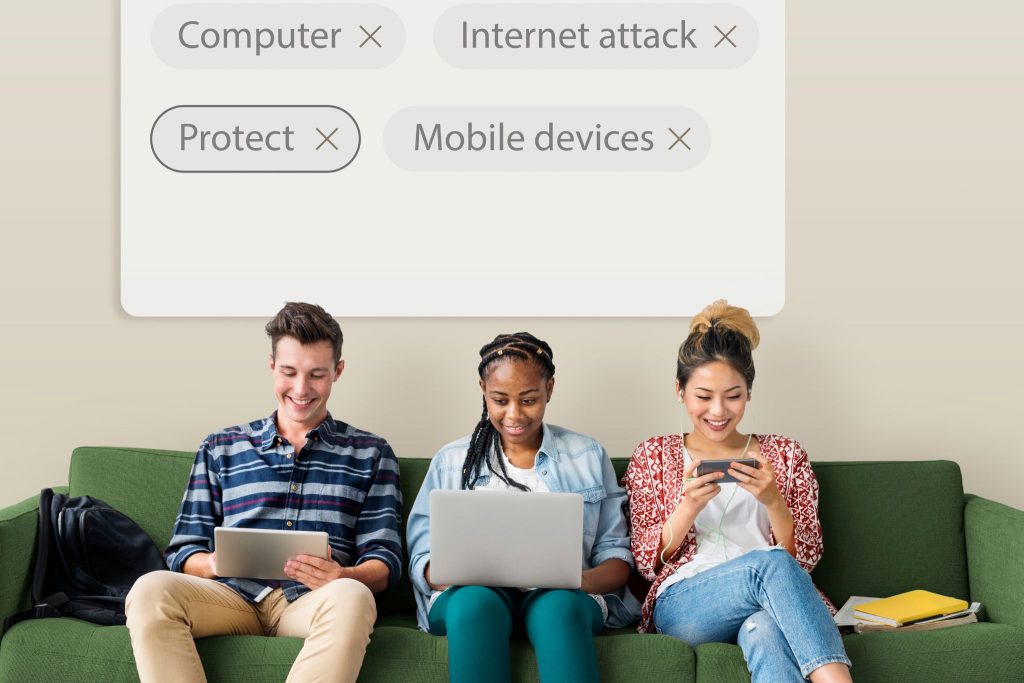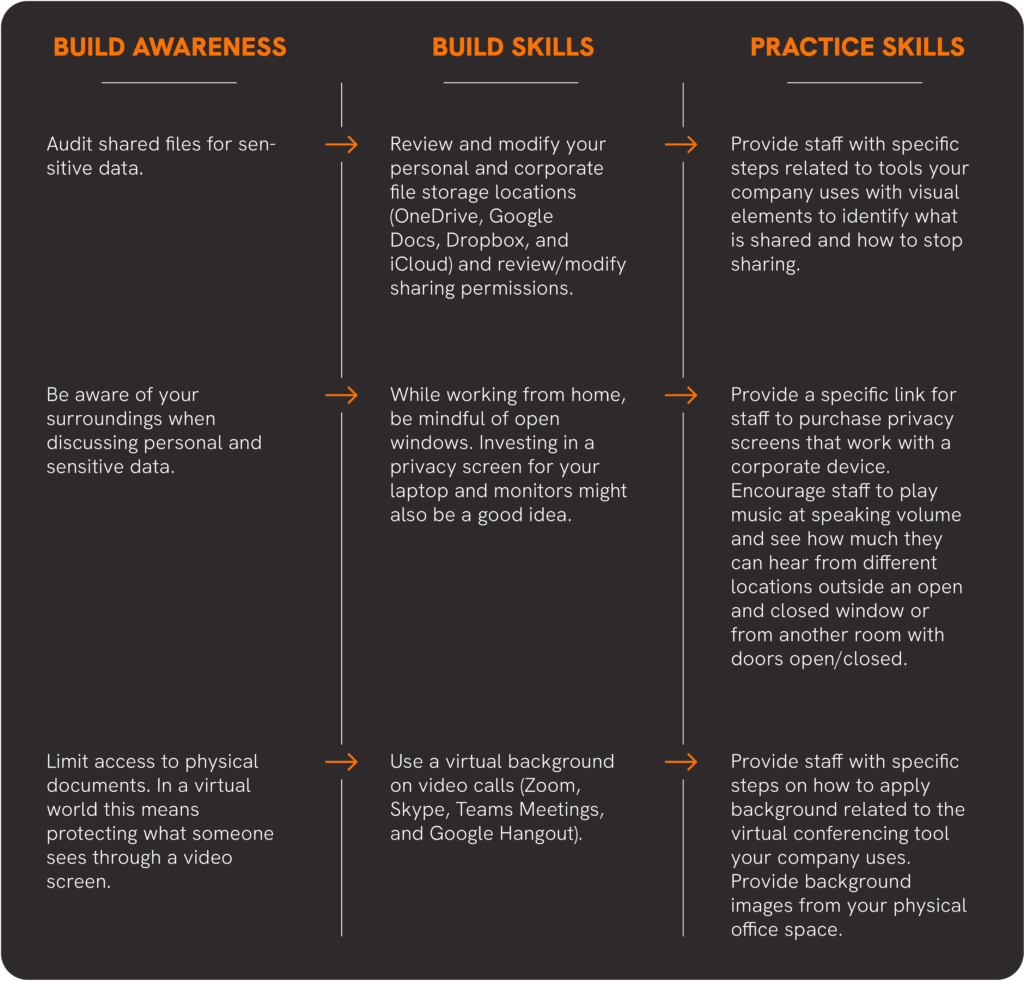Data privacy, in an increasingly digital world, has become a paramount concern for individuals, businesses, and organizations alike. With the ever-expanding collection, analysis, and utilization of personal data, safeguarding sensitive information has become a pressing necessity. Yet, while the importance of data privacy is widely acknowledged, achieving practical solutions to ensure its implementation remains challenging. In this article, we delve into the realm of data privacy and explore tangible strategies that empower individuals and entities to protect their data effectively. By examining practical measures, addressing emerging threats, and emphasizing user-centric approaches, we aim to equip readers with actionable insights to navigate the intricate landscape of data privacy in today’s data-driven era.
Below are 3 practical examples of how you can move from awareness to skill-building to enable your organization to apply data privacy principles actively.
Build data privacy awareness
In order to make data privacy practical, it is crucial to build awareness and cultivate a proactive mindset toward safeguarding personal information. One of the initial steps is to develop a keen understanding of data privacy and its implications. By staying informed about the latest trends, regulations, and best practices, you can stay ahead of potential risks and make informed decisions regarding your data.
Furthermore, auditing shared files is essential to protect sensitive data. Regularly review the files you share internally and externally, and identify any information that may be considered sensitive or confidential. Implement appropriate security measures, such as encryption or password protection, to safeguard these files from unauthorized access.
In addition to securing your digital data, it is equally important to be mindful of your surroundings when discussing personal and sensitive information. Always be aware of who may be listening or observing, whether in person or in virtual settings. Avoid discussing sensitive matters in public spaces or over unsecured networks, and ensure that your devices and communication channels are secure and encrypted.
Moreover, in a virtual world where remote work and video conferencing have become prevalent, limiting access to physical documents and protecting what others can see during your video calls is crucial. Keep physical documents containing sensitive information in secure locations, such as locked cabinets or safes. When participating in video conferences, be mindful of your background and ensure that sensitive documents or information are not visible to others. Consider using virtual backgrounds or blurring features to add an extra layer of privacy.
Build data privacy skills
To build data privacy skills, taking proactive steps in reviewing and modifying your personal and corporate file storage locations is essential. Platforms such as OneDrive, Google Docs, Dropbox, and iCloud are commonly used for storing and sharing files. Regularly assess these platforms to ensure that the files stored within them align with your data privacy requirements. Review and modify the sharing permissions for each file, granting access only to those who genuinely need it. By taking control of your file storage and sharing practices, you can minimize the risk of unauthorized access to sensitive data.
As remote work has become increasingly prevalent, it’s important to be mindful of your surroundings when working from home. While the level of caution may differ from public spaces, protecting personal and corporate information is still crucial. Ensure that open windows and other potential vulnerabilities that may compromise your privacy are addressed. Investing in a privacy screen for your laptop or monitors can add an extra layer of protection, limiting the visibility of your screen to only those in your immediate vicinity.
When participating in video calls, especially when sensitive or personal data is displayed near your desk, it is advisable to use a virtual background. Video conferencing platforms like Zoom, Skype, MS Teams, and Google Hangout offer the option to set a virtual background. This feature allows you to replace the view of your physical environment with a pre-selected image or a blurred background, thus preventing unintended exposure of confidential information to others on the call.
Practice data privacy skills
To promote effective data privacy practices within your organization, consider implementing the following steps for your staff. Firstly, provide them with clear instructions specific to your company’s tools and software, accompanied by visual elements that illustrate what information is being shared and how to stop sharing it. Additionally, offer a dedicated link for staff to purchase privacy screens compatible with corporate devices, enhancing the physical security of sensitive data. Encourage your employees to conduct a sound experiment, playing music at speaking volume, to assess the level of sound leakage in various locations, such as outside an open or closed window or from another room with doors open or closed. Lastly, equip your staff with easy-to-follow guidelines on applying virtual conferencing backgrounds, offering them a selection of background images taken from your physical office space for a cohesive and professional appearance.
At Kalles Group, we think about going beyond the typical awareness statements you see in annual security awareness and corporate compliance training. We deliver learning experiences that build specific skills related to a knowledge point, enabling learners to apply those skills within their environment with specific hands-on activities. Contact Kalles Group to level up your training program so you and your team can move beyond awareness to achieve better outcomes.


